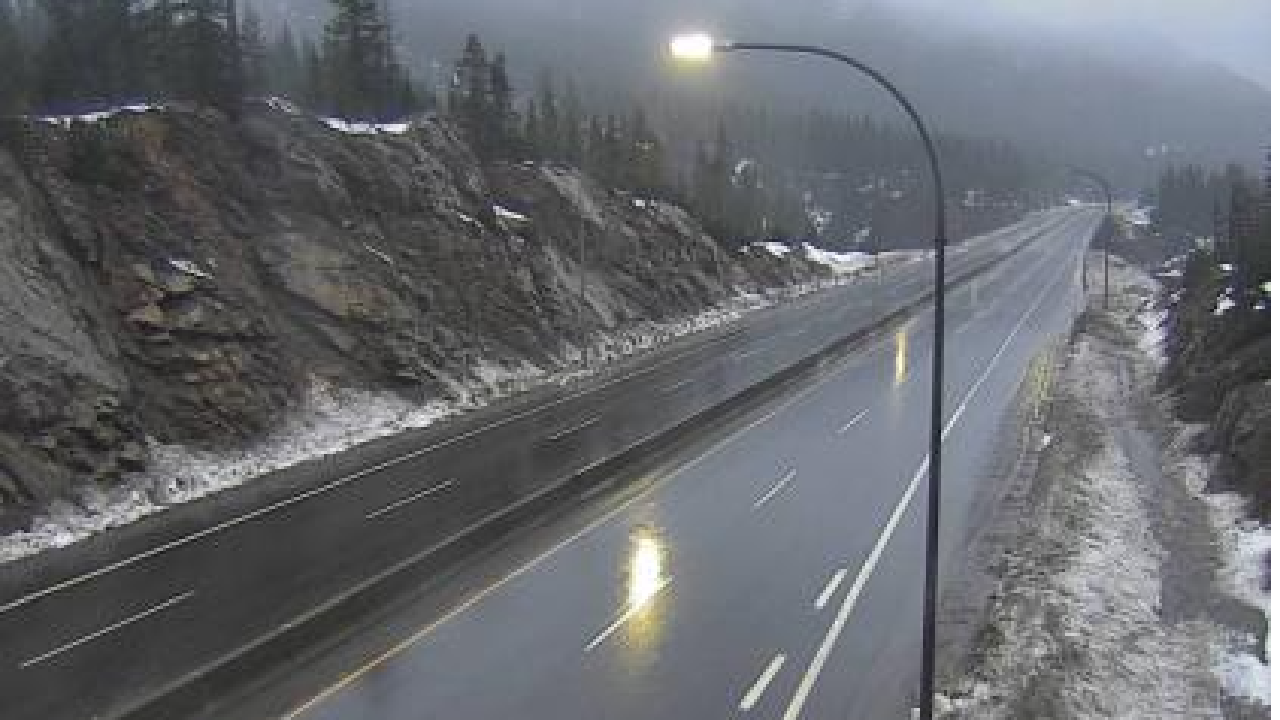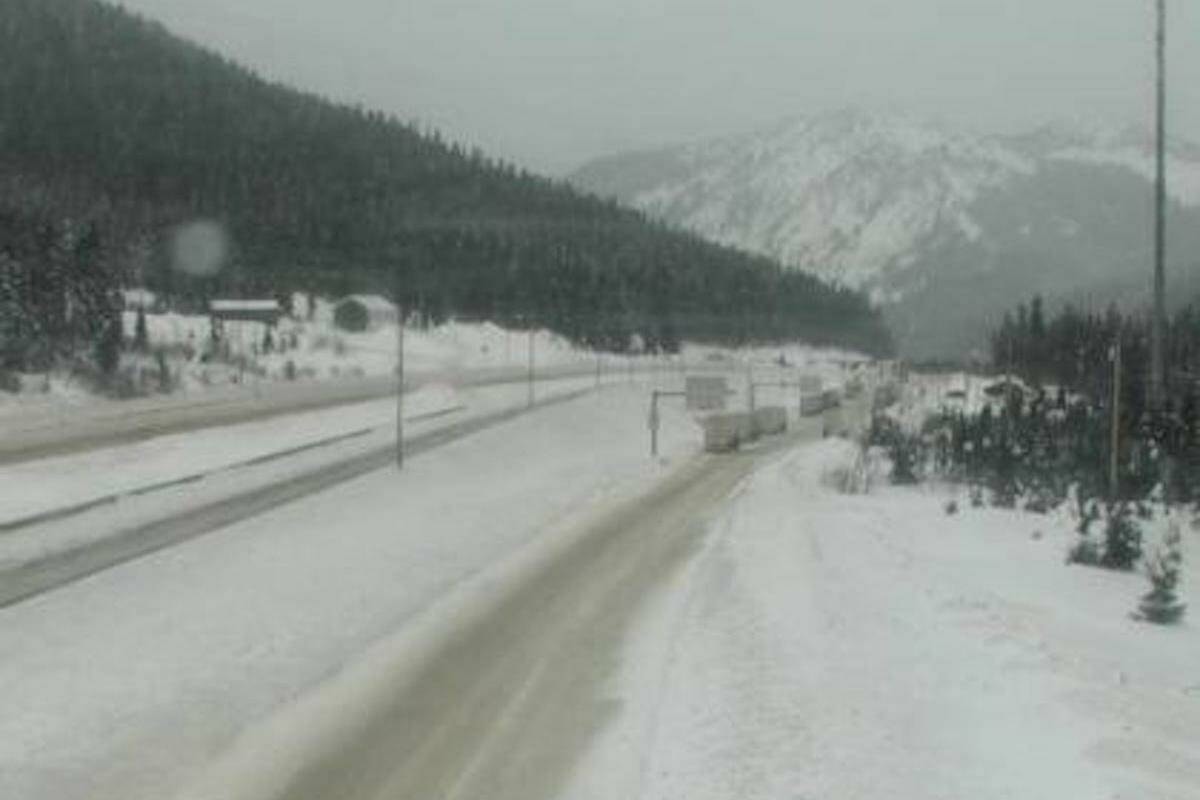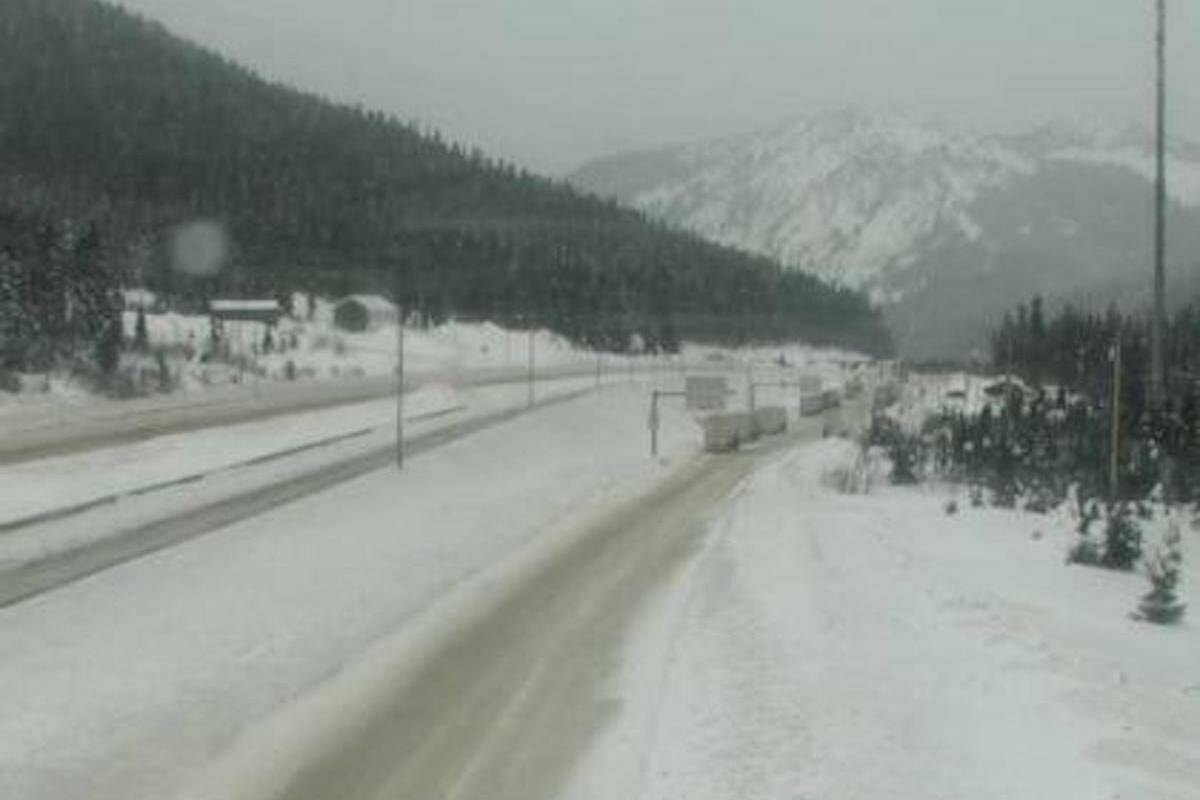Coquihalla weather camera feeds provide crucial real-time information about conditions on this vital British Columbia highway. The challenging terrain and variable weather patterns of the Coquihalla Highway necessitate constant monitoring to ensure driver safety and efficient traffic flow. These cameras offer a direct visual assessment, supplementing traditional weather forecasts and road reports, providing drivers and authorities with invaluable insights into current road conditions.
This detailed examination explores the functionality and importance of these cameras, explaining how to access and interpret the live feeds. We’ll compare the information provided by the cameras to other sources and analyze their impact on highway safety and efficiency, considering potential future improvements and technological advancements.
Functionality and Purpose of Weather Cameras
The Coquihalla Highway, known for its challenging mountain terrain and unpredictable weather, necessitates a robust system for monitoring road conditions. Weather cameras strategically placed along its route play a crucial role in enhancing safety and facilitating efficient transportation. These cameras provide real-time visual data that significantly improves decision-making for both drivers and transportation management authorities.The primary purpose of installing weather cameras along the Coquihalla Highway is to provide up-to-the-minute information about prevailing weather conditions and their impact on road usability.
This information is vital for mitigating risks associated with hazardous driving conditions, particularly during winter months when snow, ice, and reduced visibility are common occurrences. The cameras capture a continuous stream of images, offering a visual representation of the current state of the highway.
Types of Information Provided by Weather Cameras
Coquihalla Highway weather cameras provide a range of crucial information. This includes a visual assessment of road conditions, showing the presence or absence of snow and ice accumulation. They also capture the level of visibility, indicating whether fog, heavy snowfall, or blowing snow is impacting driving conditions. The images help determine the overall state of the road surface, revealing whether it is wet, icy, or covered with snow, and whether there are any visible hazards such as debris or downed trees.
This comprehensive visual data contributes to a clearer understanding of the overall driving situation.
Benefits of Real-Time Weather Information
Real-time weather information from the Coquihalla Highway cameras offers significant benefits to both drivers and transportation authorities. For drivers, the cameras provide a visual confirmation of conditions before embarking on a journey, allowing them to make informed decisions about whether to travel or postpone their trip. This helps reduce the risk of accidents caused by unexpected weather events. For example, seeing a camera image of heavy snowfall might convince a driver to delay their trip until conditions improve.For transportation authorities, the real-time data aids in efficient management of highway operations.
They can use the camera feeds to monitor conditions along the entire length of the highway, identifying areas requiring immediate attention such as snow clearing or sanding. This allows for proactive deployment of resources, leading to faster response times during emergencies and improved overall road safety. The data also supports informed decision-making regarding traffic flow management, potentially including temporary closures or speed restrictions in hazardous conditions.
This proactive approach minimizes disruptions and enhances the safety of all highway users.
Accessing and Interpreting Camera Feeds: Coquihalla Weather Camera

Accessing real-time weather information for the Coquihalla Highway is crucial for safe travel, especially during winter months. Several sources provide live camera feeds, offering visual updates on current road conditions. Understanding how to locate these feeds and interpret the images is key to making informed decisions about your journey.Reliable sources for Coquihalla Highway weather camera feeds typically include government transportation websites and dedicated traffic monitoring services.
These sources often update their feeds frequently, providing the most current information available. However, it’s important to note that camera feeds can be affected by factors such as weather conditions (e.g., heavy snow obscuring the view) or technical difficulties.
Locating Coquihalla Highway Weather Camera Feeds
Several websites provide access to live camera feeds along the Coquihalla Highway. These sources may include the official websites of the British Columbia Ministry of Transportation and Infrastructure, DriveBC, or other similar government or private transportation agencies. Searching online for “Coquihalla Highway webcams” will typically yield a number of results. It is advisable to check multiple sources for a more comprehensive view of road conditions across different sections of the highway.
The specific URLs for these camera feeds may change over time, so regular searches might be necessary to find the most up-to-date links.
Visual Indicators of Hazardous Weather Conditions
Camera feeds can provide valuable visual cues indicating hazardous weather conditions. Heavy snowfall is easily identified by the accumulation of snow on the road surface and surrounding areas, often reducing visibility significantly. Icy conditions might be less obvious, but indicators include a glazed or shiny appearance on the road, especially on bridges and overpasses where ice forms more readily.
Fog appears as a thick, hazy layer reducing visibility to near zero in severe cases. Strong winds might be indicated by swaying trees or other objects visible in the camera’s view, suggesting potential difficulties for high-profile vehicles.
Interpreting Camera Feeds for Driving Decisions
By carefully observing the camera feeds, drivers can make more informed decisions about their travel plans. For example, significant snow accumulation or icy patches visible on the camera feed would suggest the need for winter tires, reduced speed, and increased following distances. If heavy fog is observed, delaying travel until conditions improve might be the safest option. Similarly, if strong winds are evident, drivers of high-profile vehicles should consider alternative routes or delaying their trip.
It’s crucial to remember that camera feeds offer a snapshot in time and conditions can change rapidly along the highway. Therefore, combining camera feed observations with other sources of weather information, such as weather forecasts and road reports, is recommended for a comprehensive assessment of road conditions.
Comparison to Other Weather Information Sources
The Coquihalla Highway weather cameras offer a unique perspective on weather conditions, supplementing information from traditional sources. Understanding how this visual data interacts with other forms of weather information is crucial for safe and informed travel planning. This comparison highlights the strengths and weaknesses of each source, clarifying their respective roles in comprehensive weather awareness.Weather cameras provide real-time visual confirmation of current conditions, unlike forecasts which are predictions based on models and historical data.
Monitoring the Coquihalla Highway’s weather conditions is crucial for safe travel, especially during winter storms. Real-time updates from the Coquihalla weather camera are invaluable, and efficient delivery of critical supplies relies on innovative solutions like those offered by remington drone loads , which could potentially revolutionize emergency response and resupply efforts along the highway. Ultimately, improving weather monitoring and transportation logistics will enhance safety and efficiency on the Coquihalla.
Road reports often focus on specific incidents like accidents or closures, while mobile weather apps typically aggregate data from various sources, including forecasts and radar. Each source offers a different level of detail and timeliness, making a combined approach most effective.
Advantages and Disadvantages of Different Information Sources
The effectiveness of each information source depends heavily on the specific situation. For instance, a weather forecast might accurately predict an approaching snowstorm several hours in advance, giving ample time for travel adjustments. However, it may not capture the precise intensity or localized variations in snowfall along the Coquihalla. A weather camera, on the other hand, offers a direct visual representation of current conditions, showing the actual snowfall rate and visibility at a specific location.
Road reports might only indicate a closure or reduced speed limits, without specifying the underlying weather conditions causing the issue. Mobile weather apps provide a convenient combination of data, but their accuracy depends on the reliability of the source data they aggregate. A delay in updating information from one source can impact the overall accuracy of the app.
Situational Usefulness of Each Information Source
Weather forecasts are most useful for long-term planning and anticipating potential weather hazards. For example, a forecast predicting heavy snowfall the following day would allow drivers to postpone their trip or prepare for challenging driving conditions. Road reports are crucial for immediate awareness of incidents impacting traffic flow, such as accidents, road closures, or reduced speed limits. They provide real-time information on the current state of the highway.
Weather cameras offer real-time visual confirmation of the weather conditions at a specific location, allowing drivers to assess current visibility and road conditions. This is especially useful when making decisions about proceeding with a trip or seeking alternative routes. Mobile weather apps provide a convenient, centralized source of information, combining forecasts, radar, and potentially road reports, but their reliability hinges on the quality of their data sources.
They are best used for quick access to a summary of weather information.
Future Developments and Improvements

The Coquihalla Highway weather camera system, while currently providing valuable real-time information, has significant potential for future enhancements. These improvements could range from simple upgrades in image quality and coverage to sophisticated integrations with other transportation management systems, ultimately leading to safer and more efficient travel along this vital route. Further development will focus on leveraging technological advancements to maximize the system’s effectiveness and provide even more comprehensive weather data.The current system relies on static camera placements.
Future development should focus on expanding both the number of cameras and their strategic placement to provide more comprehensive coverage, particularly in areas prone to challenging weather conditions like avalanche zones or areas susceptible to sudden snowfall or ice buildup. Improved camera technology could also incorporate features such as wider angles of view, higher resolution imaging for better detail in challenging weather, and enhanced night vision capabilities for improved visibility during low-light conditions.
Monitoring the Coquihalla Highway’s challenging weather conditions often relies on readily available webcams. Understanding the impact of severe weather on transportation is crucial, and this is where advanced aerial technology comes into play. Companies like archer aviation , specializing in drone services, could potentially offer valuable data collection for improved weather forecasting and road safety along the Coquihalla, supplementing existing camera feeds.
Ultimately, real-time information from various sources enhances overall safety on this vital route.
Enhanced Image Quality and Coverage, Coquihalla weather camera
Improved image quality is paramount. Higher resolution cameras would allow for clearer identification of road conditions, such as the presence of snow, ice, or debris. Wider field-of-view lenses would capture a larger area, providing a more comprehensive view of the road and surrounding environment. The addition of thermal imaging cameras could provide valuable insights into road surface temperatures, aiding in the prediction of black ice formation, a significant hazard on mountain passes.
This improved visual data would significantly enhance the accuracy and reliability of weather assessments. For example, a higher resolution camera could clearly distinguish between a light dusting of snow and a significant accumulation, allowing for more accurate travel advisories.
Integration with Transportation Management Systems
Integrating the weather camera data with existing transportation management systems represents a significant opportunity for improvement. Real-time data from the cameras could be seamlessly integrated into traffic management systems, providing operators with a visual understanding of road conditions. This integration could trigger automated alerts to drivers, adjust speed limits dynamically based on current conditions, and even help to optimize snowplow deployment strategies.
For instance, if a camera detects heavy snowfall accumulating rapidly, the system could automatically reduce speed limits on affected sections of the highway and alert drivers via variable message signs. This proactive approach would enhance safety and improve traffic flow.
Advanced Weather Data Analysis
The incorporation of advanced image processing and machine learning algorithms could automate the analysis of camera feeds. These algorithms could identify and classify weather events, such as snow accumulation rates, ice formation, or visibility reduction, providing quantitative data beyond simple visual observation. This data could be used to develop more accurate weather forecasts specific to the Coquihalla Highway, leading to more timely and effective warnings for drivers.
For example, a machine learning algorithm could be trained to identify the rate of snowfall based on image sequences, providing a more precise estimate of accumulation than human observation.
Visual Representation of Weather Conditions

Understanding how weather conditions appear in Coquihalla Highway weather camera feeds is crucial for accurate interpretation and safe travel planning. The visual characteristics of snow, rain, fog, and clear skies vary significantly, and these variations are further impacted by the time of day and lighting conditions.The following section provides a visual guide to interpreting these conditions as they might appear on a typical Coquihalla weather camera.
The descriptions aim to aid drivers in understanding the conditions on the highway based on camera imagery.
Visual Guide to Weather Conditions on the Coquihalla Highway
The appearance of weather on the Coquihalla Highway’s weather cameras is heavily influenced by the type of weather, the time of day, and the angle and intensity of the light. This section Artikels the visual characteristics of four key weather conditions.
- Snow: Snow appears as white or light grey precipitation falling from the sky and accumulating on the ground. Heavier snowfall will result in a more intense white, potentially obscuring the road and surrounding landscape. Light snow may appear as a subtle haziness. The intensity of the white will be affected by the amount of ambient light.
- Rain: Rain appears as streaks or sheets of darker grey or black against the background. The intensity of the darkness will correlate with the intensity of the rainfall. Heavy rain may obscure visibility significantly, making the road and surrounding landscape appear blurred or washed out. The contrast between the rain and the background will be more pronounced during the day.
- Fog: Fog appears as a hazy, white or grey veil reducing visibility. It often obscures details in the background, making the landscape appear indistinct and muted in colour. Heavy fog can significantly reduce visibility, almost completely obscuring the road and surroundings. Fog is less easily distinguished at night as the contrast between fog and the background is diminished.
- Clear: Clear conditions are characterized by a good visibility of the surrounding landscape. The colours appear vivid and sharp, with good contrast between the road, the sky, and the surrounding mountains. The level of detail visible will vary depending on the camera’s zoom and resolution. At night, clear conditions will still show a good contrast between light and dark areas, although the overall image will be dimmer.
Daylight versus Nighttime Appearance
The time of day dramatically alters how weather conditions appear in camera feeds. During the day, the strong sunlight provides high contrast and allows for clearer differentiation between weather elements and the background. At night, however, the contrast is reduced, and some weather conditions become more difficult to discern. For instance, light snow might be less visible at night, while heavy rain or fog will still reduce visibility but appear darker overall.
Artificial lighting, such as streetlights, can also influence the appearance of weather at night, creating additional light sources and reflections that can affect the interpretation.
Influence of Shadows and Lighting
Shadows and lighting significantly affect image interpretation. Strong sunlight can create harsh shadows, potentially obscuring details or creating the illusion of heavier snowfall or rain than is actually present. Conversely, low light conditions, such as dawn or dusk, or overcast days, can reduce contrast and make it harder to distinguish between different weather types. Backlighting can also create glare or washout, reducing visibility and making it difficult to assess the severity of weather conditions.
Understanding how shadows and lighting affect the image is essential for accurate interpretation of the camera feed.
In conclusion, the Coquihalla weather cameras represent a significant advancement in highway safety and traffic management. By providing real-time visual data, these cameras empower drivers to make informed decisions and enable authorities to respond swiftly to changing conditions. Continuous improvement and integration with other transportation systems will further enhance their effectiveness, ensuring safer and more efficient travel along this crucial route.
The future of highway safety relies on such proactive measures, and the Coquihalla weather cameras are a prime example of this crucial development.
FAQ Corner
How often are the Coquihalla weather camera feeds updated?
Update frequency varies depending on the specific camera and system, but generally, images are refreshed every few minutes to provide near real-time data.
Are the Coquihalla weather cameras operational 24/7?
Yes, they are designed for continuous operation to provide coverage throughout the day and night.
What should I do if I see hazardous conditions on a Coquihalla weather camera feed?
Exercise caution, adjust your driving accordingly (reduce speed, increase following distance), and consider delaying your trip if conditions appear unsafe. Check for updated road reports and alerts.
Where can I find archived footage from the Coquihalla weather cameras?
Archived footage availability depends on the specific provider. Some may offer limited archived access, while others may not offer this feature.
